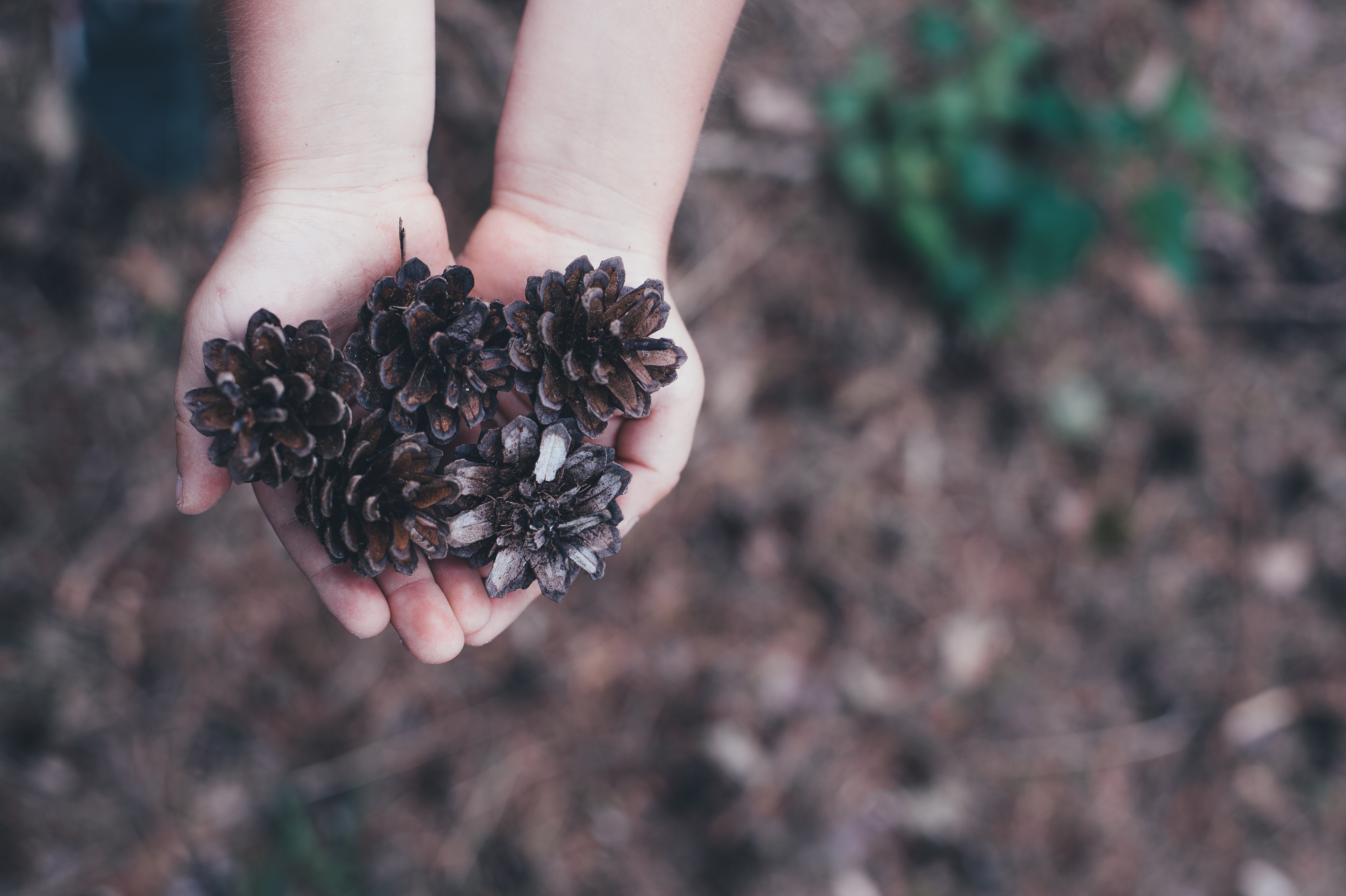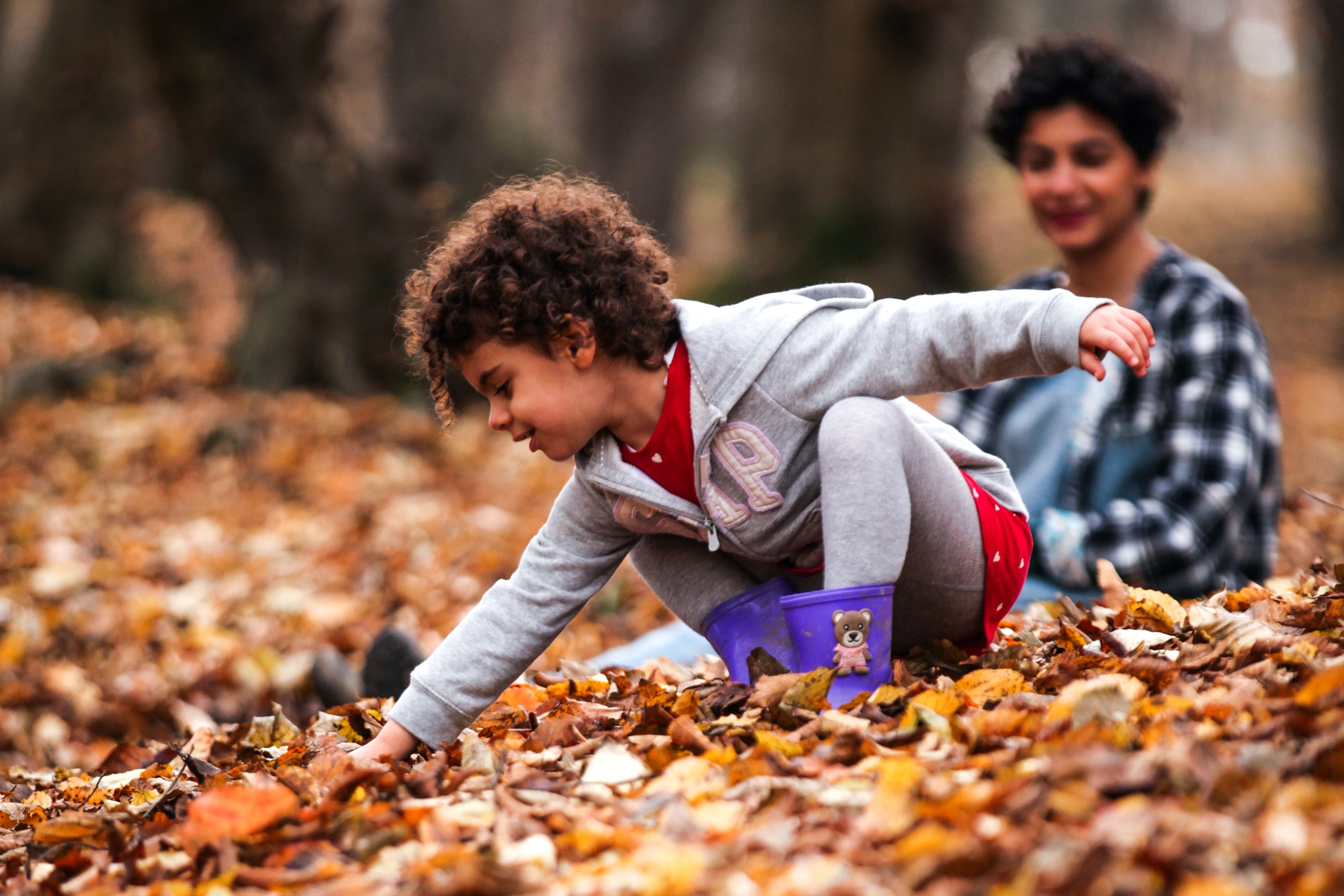The study of trees offers many opportunities for hands-on learning! Lean into your child’s curiosity and explore topics in math, science, art, and more with these tree activities.
1. Grow Your Own Tree from a Pinecone

Did you know you can harvest seeds from a pinecone and potentially grow your own tree? This is a great activity for learning about the germination process and familiarizing yourself with the different parts of a tree.
Here’s how you do it:
- Harvest a closed pinecone from a tree in autumn. Put the pinecone in a paper bag, and store it in a warm, dry place. Every few days give the bag a shake. When the cone is dry enough, it will release the seeds. You’ll hear them rattling around inside the bag.
- Put the loose seeds in a resealable plastic bag, and store them in the freezer for 3 months. This mimics the three months of winter when the pinecone would lie buried under snow, pine needles, or debris until spring. This period of cold and dormancy is called stratification.
- After three months, remove the seeds from the freezer and plant each seed in a small container. An empty, 8 ounce yogurt cup with drainage holes poked in the bottom is perfect. Fill the container with potting mix or good quality garden soil and place it on a saucer to catch any water that might leak out the bottom. Choose one seed that is dark in color for each container, and cover the seed with about 1/4 inch of soil. Place the container in a sunny spot, and keep the soil moist, but don’t overwater. The soil should not dry out, but you also don’t want it to get too soggy.
- Be patient! If the conditions are right, it will take about 20 to 30 days for a seedling to emerge. Once the seedling is around 8 inches tall, transplant it outdoors. Keep in mind that it could grow quite large, so don’t plant it too close to buildings or other mature trees.
2. Calculate the Age of a Tree

Scientists have several ways of determining the age of a tree. Here are a couple of methods you can try at home.
Count the Annual Rings
Find a tree that has been cut down, and check out the rings inside. Each year a tree will grow a new layer of wood beneath the bark. The rings vary in size depending on how much the tree grew that year. Scientists can learn a lot by looking at these growth rings! Wide rings mean the tree had a good growing year with plenty of rainfall. Darker rings might mean the tree didn’t get enough nutrients or sunlight. Certain markings on the rings can indicate a drought, a forest fire, a flood, or an infestation of insects.
Measure the Circumference
Going around the trunk with rope or yarn and then measuring the rope is a good way to estimate a tree’s age. Different species of trees grow at different rates, but most trees add around 2.5 centimeters per year.
3. Make Tree Paintbrushes

Experiment with painting using different tree materials. This is a great project to do outside for easy cleanup!
Start by collecting an assortment of twigs, leaves, branches, and pinecones. Try to find a variety of sizes and textures.
If you’d like to make paintbrushes with your finds, break some twigs down to a manageable size and attach leaves, sprigs, or pinecones to the twigs using twine or rubber bands. Or just use your nature treasures all on their own!
Dip your chosen object into washable tempura paint and spread it on a large piece of paper. Which materials work best? What types of shapes and designs can you make? Have fun creating!
Enjoy this post? Read on, and sign up for our homeschool newsletter.
10 Favorite Picture Books About Trees